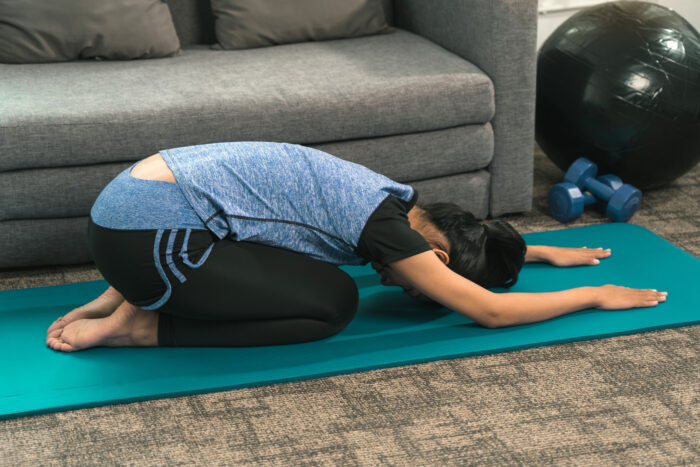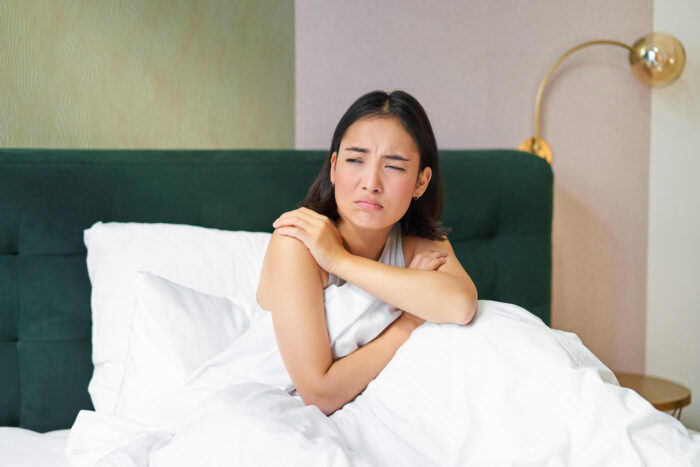
Getting rid of lumbar spine pain typically involves a combination of self-care measures, lifestyle adjustments, and, in some cases, medical interventions.
Here’s a comprehensive approach to managing and alleviating lumbar spine pain…
Self-Care and Home Remedies
Rest and Activity Modification
- Short-term rest to avoid exacerbating the pain, followed by gradual return to normal activities with modifications to avoid straining the back.
Hot and Cold Therapy
- Apply ice packs to the affected area for the first 24-48 hours to reduce inflammation, then switch to heat therapy (heating pads, warm towels) to relax muscles and improve blood flow.
Over-the-Counter Pain Relief
- Take nonsteroidal anti-inflammatory drugs (NSAIDs) like ibuprofen or acetaminophen for pain relief and to reduce inflammation.
Gentle Exercise
- Engage in low-impact exercises like walking, swimming, or cycling to promote blood flow, flexibility, and muscle strength without putting excessive strain on the lumbar spine.
Proper Posture
- Maintain good posture while sitting, standing, and lifting to reduce strain on the lumbar spine. Use ergonomic furniture and adjust your workstation accordingly.
Physical Therapy and Exercise
Core Strengthening
- Perform exercises to strengthen the core muscles, including the abdominals, obliques, and lower back muscles, which provide support to the lumbar spine.
Stretching
- Incorporate stretches that target the muscles surrounding the lumbar spine to improve flexibility and alleviate tension.
Professional Treatment
Physical Therapy
- Work with a physical therapist to develop a customized exercise program and receive manual therapy to address specific issues contributing to lumbar spine pain.
Chiropractic Care
- Consider chiropractic adjustments to realign the spine and alleviate pressure on nerves and joints.
Massage Therapy
- Regular massage sessions can help reduce muscle tension, improve circulation, and provide relief from lumbar spine pain.
Acupuncture
- Some individuals find relief from lumbar spine pain through acupuncture, which involves the insertion of thin needles into specific points on the body to promote healing and pain relief.
Medical Interventions
Epidural Steroid Injections
- Injections of corticosteroids into the epidural space of the spine can help reduce inflammation and alleviate pain for individuals with severe lumbar spine pain.
Medication Management
- In cases of chronic or severe pain, prescription medications such as muscle relaxants or opioids may be prescribed under the supervision of a healthcare professional.
Surgery
- Surgery is typically considered as a last resort for individuals with severe lumbar spine pain that does not respond to conservative treatments. Procedures such as discectomy, laminectomy, or spinal fusion may be recommended depending on the underlying cause of the pain.
Lifestyle Modifications
Weight Management
- Maintaining a healthy weight can reduce pressure on the lumbar spine and alleviate pain associated with excess body weight.
Smoking Cessation
- Quitting smoking can improve blood flow, reduce inflammation, and promote healing of tissues in the lumbar spine.
Stress Management
Relaxation Techniques
- Practice stress-reduction techniques such as deep breathing, meditation, or yoga to alleviate muscle tension and promote relaxation.
Ergonomic Adjustments
Workplace Modifications
- Ensure your workstation is ergonomically designed to support proper posture and minimize strain on the lumbar spine.
Proper Lifting Techniques
- Use proper lifting techniques, such as bending at the knees and keeping the back straight, to avoid injury and strain on the lumbar spine.
Conclusion
Managing and alleviating lumbar spine pain requires a multifaceted approach that addresses underlying issues, promotes healing, and supports long-term spine health. Work closely with healthcare professionals to develop a comprehensive treatment plan tailored to your specific needs and condition.
Related Posts
How Do You Unlock Your Lumbar Spine?
On
July 22, 2024
Does Walking Help Lumbar Pain?
On
May 17, 2024
Do Lumbar Pillows Really Work?
On
May 20, 2024
Is Walking Good For Lumbar Spine?
On
June 4, 2024



